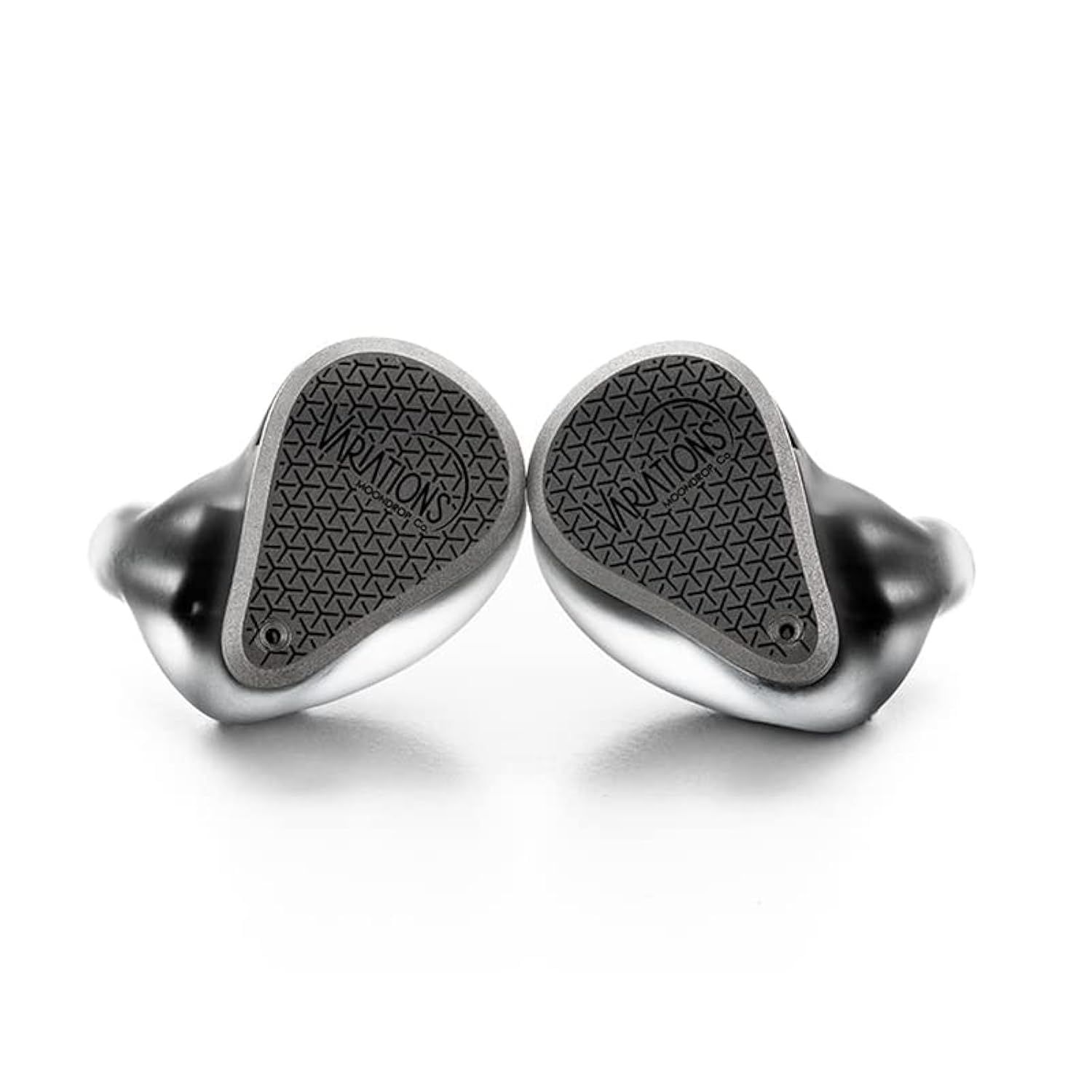FH7vs.Variations
Sound & Specs Comparison
Information
Both IEMs are widely regarded in the audiophile community. See how they differ in terms of sub-bass response, upper mids, clarity, and overall tonality. Spider charts and rating breakdowns included.
Objective Comparison
Facts, details, stuff.
| General Info | FH7 | Variations |
|---|---|---|
| Brand | FiiO | Moondrop |
| Country | China | China |
| IEM Description | The FiiO FH7 is a flagship hybrid IEM that pairs a 13.6 mm Dynamic Driver with four Balanced‑Armature drivers in a 4‑way crossover. Housed in lightweight aluminum‑magnesium alloy shells and paired with a detachable silver‑plated OFC cable, it offers secure comfort and easy cable swaps. Sonically, it delivers punchy, textured bass, warm, natural mids and a smooth yet detailed treble extension. The kit includes multiple silicone and memory‑foam tips plus a premium carry case for on‑the‑go listening. | Moondrop Variations is a hybrid in-ear monitor combining electrostatic, balanced armature, and dynamic drivers for a precise and immersive listening experience. Known for its balanced, reference-style tuning with tight bass, clean mids, and extended treble, it’s a favorite among audiophiles who crave clarity and technical performance. Ideal for detail lovers and those seeking a high-fidelity sound signature. |
| Price Level | 100 – 500 | 500 – 1.000 |
| Housing & Driver | ||
|---|---|---|
| Driver Config | Hybrid | Tribrid |
| Driver Types | Dynamic Driver + Balanced Armature | Dynamic Driver + Balanced Armature + Electrostatic |
| Shell Material | aluminum‑magnesium alloy | Copper |
| Cable | silver‑plated OFC cable | – |
| Technical | ||
|---|---|---|
| Freq Range | 5 Hz – 40 kHz | 9-40,000 Hz |
| Impedance (Ω) | 16 | – |
| Sensitivity (dB) | 111 | – |
| Crossover | 4‑way crossover | – |
| Platform Info | ||
|---|---|---|
| Comments | 2 | 1 |
| Visit Count | 124 | 91 |
| External Reviews | 1 | 3 |
Meta Ratings
Especially for complex musical passages, FH7 handles layering and imaging noticeably more confidently and precisely. For comfort fit, It performs clearly better (8 vs 7). Craftsmanship-wise, It feels measurably more meticulously assembled, reflecting a level of engineering and attention to detail that elevates the product. Compared to Variations, It’s cable exhibits substantially smoother handling, with fewer instances of memory or stiffness. It’s bundled components feel substantially more premium, suggesting a stronger focus on user satisfaction and long-term value.
| FH7 | Variations | |
|---|---|---|
| Sound | 7.5 | 6.5 |
| Comfort Fit | 8.0 | 7.0 |
| Build Quality | 8.5 | 6.5 |
| Stock Cable | 8.0 | 5.5 |
| Accessories | 8.5 | 6.0 |
Sound Characteristics
Variations produces sub-bass that is a more textured and present in cinematic or bass-heavy tracks (6.5 vs 6). FH7 offers a stronger and more impactful bass response, adding weight and presence where Variations feels less assertive (7 vs 6.5). Listeners may find the low-end impact on It a more engaging during high-dynamic passages (9 vs 8.5). It renders lower mids a more naturally, giving male vocals and instruments a fuller tone than Variations (10 vs 7.5). Variations offers a greater shimmer and nuance in the lower treble, revealing micro-details that FH7 misses (7.5 vs 7). The highest frequencies on FH7 feel a more natural and less rolled-off compared to Variations (10 vs 8). Listeners may notice that It presents sounds with a more lateral space, giving recordings more openness than Variations (9 vs 7.5). It extracts low-level details n more effectively, helping subtle nuances emerge clearer than on Variations (9 vs 8). It organizes musical elements a better across depth, enhancing spatial realism over Variations (7.5 vs 7). It shows s better control of masking effects, maintaining clarity across frequency ranges better than Variations (9 vs 7). The note presentation is n fuller and more tactile on Variations, giving instruments a stronger physical presence than FH7 (8 vs 7). It delivers overwhelmingly stronger slam and physicality, making drums and transients hit harder than FH7 (8.5 vs 3). The upper range of vocals is d cleaner and more forgiving on It, helping it avoid sibilant harshness that FH7 shows (9 vs 7.5). Timbre on FH7 sounds m more realistic and natural, whereas Variations feels slightly more artificial or colored (9 vs 7.5). Across the frequency range, It stays m more consistent in tonal balance, resulting in a smoother listen than Variations (9 vs 7). The grain and surface of instruments are rendered m more vividly by It, while Variations feels flatter (9 vs 7.5).
| FH7 | Variations | |
|---|---|---|
| Sub Bass | 6.0 | 6.5 |
| Bass | 7.0 | 6.5 |
| Bass Feel | 9.0 | 8.5 |
| Lower Mids | 10.0 | 7.5 |
| Upper Mids | 8.0 | 8.0 |
| Lower Treble | 7.0 | 7.5 |
| Upper Treble | 10.0 | 8.0 |
| Sound Stage Width | 9.0 | 7.5 |
| Detail | 9.0 | 8.0 |
| Layering | 7.5 | 7.0 |
| Masking | 9.0 | 7.0 |
| Note Weight | 7.0 | 8.0 |
| Slam | 3.0 | 8.5 |
| Sibilance | 7.5 | 9.0 |
| Timbre Color | 9.0 | 7.5 |
| Tonality | 9.0 | 7.0 |
| Texture | 9.0 | 7.5 |
Tonal Signature
// Nothing to compare yet.

